There is no Hellraiser without Clive Barker, and no Hellraiser: Judgment without Gary Tunnicliffe. From his early years working effects on the films to writing, directing, and starring in Judgment, Gary is an expert on all things Cenobite and one of the current architects of the Hellraiser franchise. We were lucky enough to sit down with him recently to talk about his time on the film and some of the props in the sale…
Propstore: Let’s start with the basics. What was your first exposure to Hellraiser?
TUNNICLIFFE: I was a huge fan of Clive Barker’s written work and didn’t know he was English. Just kind of read this guy and got into it. I hadn’t seen Rawhead Rex or Damnation Game, but I’d heard talk of this Hellraiser movie. Saw it, literally went to my local cinema, and it just blew me away. I literally sat in the cinema and had a moment where you kind of go, like, “Who did that? How did they do it? And, I want to do that.” And the funny thing was I had been reading Fangoria and knew who Rick Baker was and Dick Smith and all those guys, but had no idea who Bob Keen was, who was the guy who was kind of credited as doing the makeup effects. And then started the process of working with an English effects company, so it was kind of like a dream come true. And then, after a couple of years, I managed to get an interview and got a job there and they’d just completed working on Hellbound.
So I came in a little before Hellraiser: Hell on Earth happened, part three. And I started off as a runner but on that particular film I was the box maker and did all that kind of stuff. But, during the production, there was a whole bunch of things that kind of when wrong or went south, and I had some pretty good managerial skills, and they served me well and very quickly I kind of ascended the ranks to kind of a Workshop Supervisor situation.
We finished that film, and I wound up going out to do reshoots and you know, actually working with Clive directly and with Doug Bradley, who played Pinhead, and then we set up a shop in Los Angeles, which I headed, and first thing up really was Lord of Illusion and Hellraiser: Bloodline, the fourth film. And at that point Bob Keen was kind of like “Look, I’m Hellraiser-ed out. Clearly you have an affinity for this. You seem to love it in an abnormal way, so why don’t you take this and run with it.” And he kind of passed the baton and that was it. For the rest of my life, up until right now, I’ve been involved with Hellraiser as a makeup effects designer, little roles here and there playing Cenobites and cameos, and also doing second unit direction and designing all the characters. Then, got involved with doing stories as well, so it’s been, you know, it got bigger and bigger and bigger.
PS: How did you come up with the story idea for what became Hellraiser: Judgment?
GT: Yeah, Judgment was a situation where, right after Revelations I’d kind of come up with an idea for a story. It’s very difficult to have Pinhead returning and talking because he’s a proactive character. If he turns up, he has to be doing something. And if he doesn’t, it’s kind of like, well, what’s he doing? So, I thought we needed a foil, another character, something that could be more… a character that could talk. Like I say, I always think if Pinhead talks, if he turns up and starts talking too much, he becomes sort of like a Bond villain, you know? It’s like, okay stop talking about it and get on with it, you know what I mean? So I thought maybe we could have a character that was more the sharp end of the spear. And then that kind of necessitated like, what does he do, what’s his job, because you can’t just have them being Cenobites? The Cenobites really have a task, I think. They, kind of, turn up and they do some pretty nasty stuff, but you can’t do a whole film of that. So, that’s when I came up with the idea of this other group, the Stygian Inquisitioners, as they became known as, and that kind of grew the Hell portion of it.
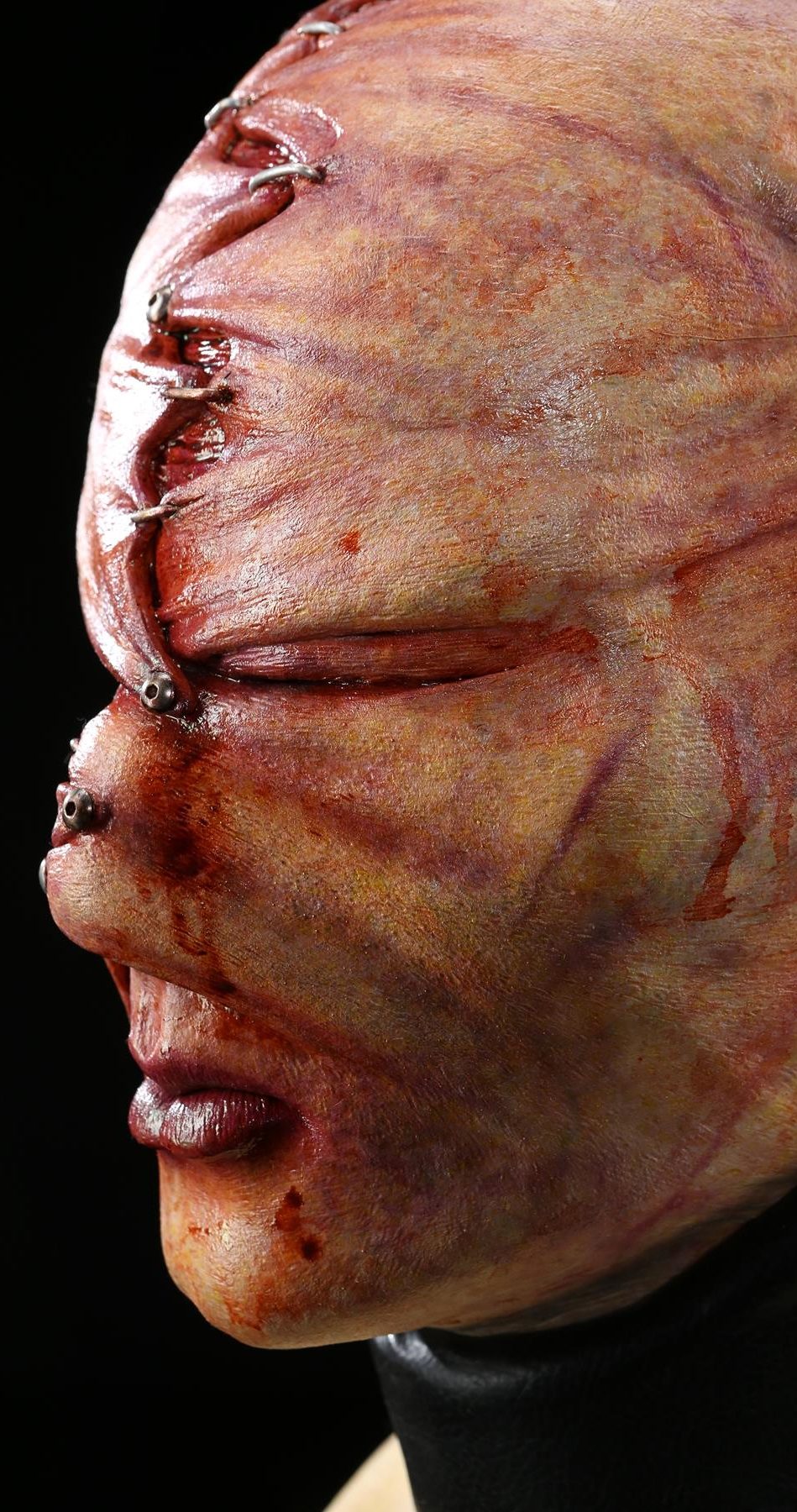
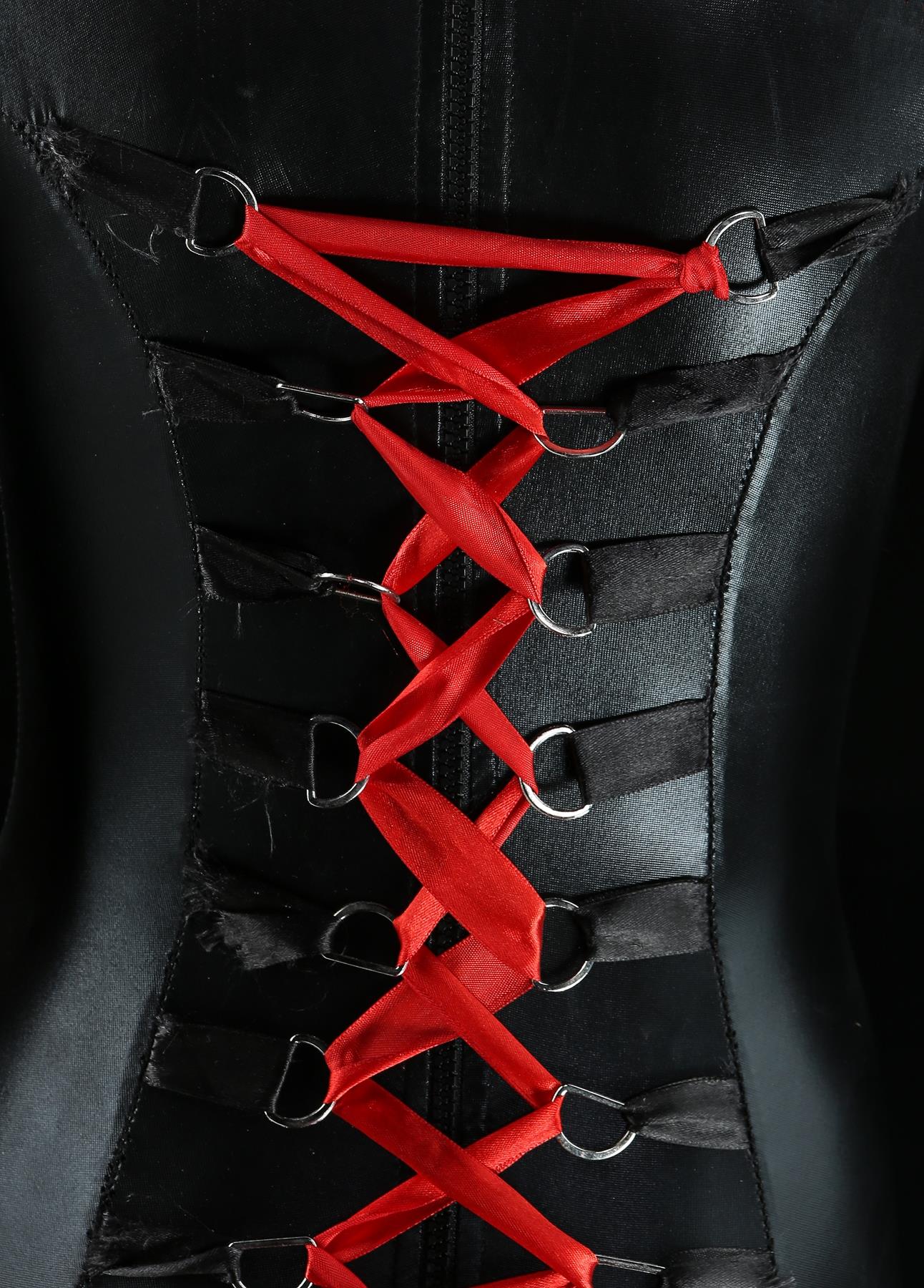
And then, I needed to have a story that would kind of intertwine with it, and that was the idea of this cop, and the idea that you’d kind of trick the audience a little bit with this inquisition. Something would happen where you thought, “He’s so innocent, he’s such a good guy,” that he gets rejected by them, they put him back [in the world]. The spider’s web picked up something that wasn’t supposed to be here. But then you find out the reason they rejected him was because he’s actually worse than any of them.
But it was a hard sell to Dimension, they didn’t want to go for it. When I was explaining, and, obviously, SPOILER ALERT, sequences of old ladies licking people and making them drink their own spit, and a guy eating flesh pages, they were like, “No, we don’t want any of that.” So I was very firm and steadfast and was like, if we’re going to do something, and it’s going to be probably my last hurrah into Hellraiser, then let it be something different, and this is the project worth risking it on. And eventually, after some toing and froing, they agreed to it. And once they read the script they were like “Oh yeah, we get this.” That doesn’t mean they didn’t make me chop out a lot of really weird, creepy stuff! But yeah, I would say that roughly what you see in the film is 70% of what I really wanted to do.
PS: Is there added pressure when working on a franchise with an established fan base, like Hellraiser?
GT: Oh yeah, without a doubt. But I think what you have to do in those situations is to lead by example. So I think people very quickly, crew-wise, very quickly realize this person is really into it. It’s not just a pay check. So I think all you can do is lead by example and even people who aren’t really into it realize it’s a passion project.
And, I think the fans even realize that. Even people who didn’t like the film perhaps, were like “Look I really don’t like it that much and clearly it wasn’t a very big budget production and it’s not as good as the first film…” it never could be, but even those people in their critiques have said “but clearly the guy has a lot of passion for it.” So I think the love for it did show. And luckily everyone that did come on board, everybody, either wanted to be involved, were excited about it, or were excited by my excitement for it. I couldn’t have had a better crew, I really mean that. I would have never thunk that a little Oklahoma project would yield the dedicated and talented crew I was lucky enough to have.
PS: You wore a lot of hats during this production! What was your favorite “role” you took on when getting the movie made?
GT: I find writing a chore, I do. I enjoy writing… I think, this is going to sound very arrogant, as a writer, your purest moment is when you write your first script. And when it’s done, it’s finished. You own it. It’s yours and no one’s tampered on it. No one’s pissed all over it. You haven’t gotten your notes from the studio. So, creating that is fun, is great fun. Then you have to endure the chore of getting that vision to its final version that everyone else signs off on. And figuring out, like, are those people giving notes because they really believe that, or are they just justifying their paycheck every week. I don’t know. Because every time I’ve given a script, even when I’ve had glowing reviews, you know, it’s always been “We’ve read the script and we loved it and we really want to buy it and it’s fantastic” and you go “Oh, great.” And then this phrase comes out that just chills you to the bone;
“Obviously, we have a few notes.”
And then they reveal 30 pages of everything, changing the entire f$#@ing thing.
Direction is great, and wonderful, but carries a lot of pressure with it. So, once you get there it’s a case of really kind of, like, having your ducks in a row and knowing what you’re doing. But I love it. It’s the job to have that’s the most fun you can have with your clothes on. If you like it. But, it’s a job, I think, you have to be a narcissist for. You have to enjoy being in control and being beholden to a lot of other people. If you’re in any way not that person, then I don’t think it’s the job for you.
PS: And you have to be really confident in your vision at that point, too.
GT: Yeah, and I’ve worked with directors who aren’t, you know? I’ve been fortunate, I’ve worked with directors on both ends of the spectrum, you know. From the Renny Harlan’s and David Fincher’s, they’re all very, very in control, to people who just kind of sit there mumbling. It tends to be a lot of waiting around on those sets.
Being an actor is great fun. Acting is awesome… because it’s just is. I don’t know how other actors work but, when I played the Auditor, even when I was directing, there was a complete out of body experience. When the camera roles and I have to become him, I literally become him. To the point, there’s a very strange thing that used to occur which is I’d be playing the role of the Auditor, doing my dialogue, and then I would almost have, like, an out of body experience where I had to, kind of, tap myself on the should and be like “You need to call cut now.” But acting is great fun!
PS: What was it like casting a new actor for Pinhead? What did Paul T. Taylor have that made you realize he was your guy?
GT: Well, after the debacle of Stephen Smith Collins in Revelations which, I wrote the script [for], but I wasn’t involved with. I was doing Scream 4 at the time. But my guys were doing the effects. So I got a call from Mike Regan, who was working of the show, and he said “I’ve just met the guy who’s playing Pinhead. Lovely guy, but you know, physically, he’s got an odd-shaped head,” and there is something you need to lend itself towards the look of this character.
So when I came to it, I knew we were going to recast Pinhead, and Doug had passed on the role, we’re still great friends, me and Doug, but I knew I had to meet somebody who had, physically, the look, but also the acting chops as well. So I knew Paul had the chops as an actor, I’d seen his readings, but I knew right away, physically from his face, that his face would lend itself to it.
You know, I’ve always felt if I could, in a perfect world, Peter Cushing would have been the ideal candidate to play Pinhead. And if you look at Paul, he looks a little bit like a young Cushing. He’s got those high cheek bones, you know? Good stretch to his face. So, really I knew he’d look good in the makeup. And then we tried to give him a hint of Doug. I mean, it was uncanny at times on set because I’d be chatting to Paul or I’d turn around and he’d say something and, you know… having done six or seven films with Doug and to have worked with Doug for years, it’s kind of weird to have this [new] voice. You feel like you have a familiarity with it. It would weird me out.
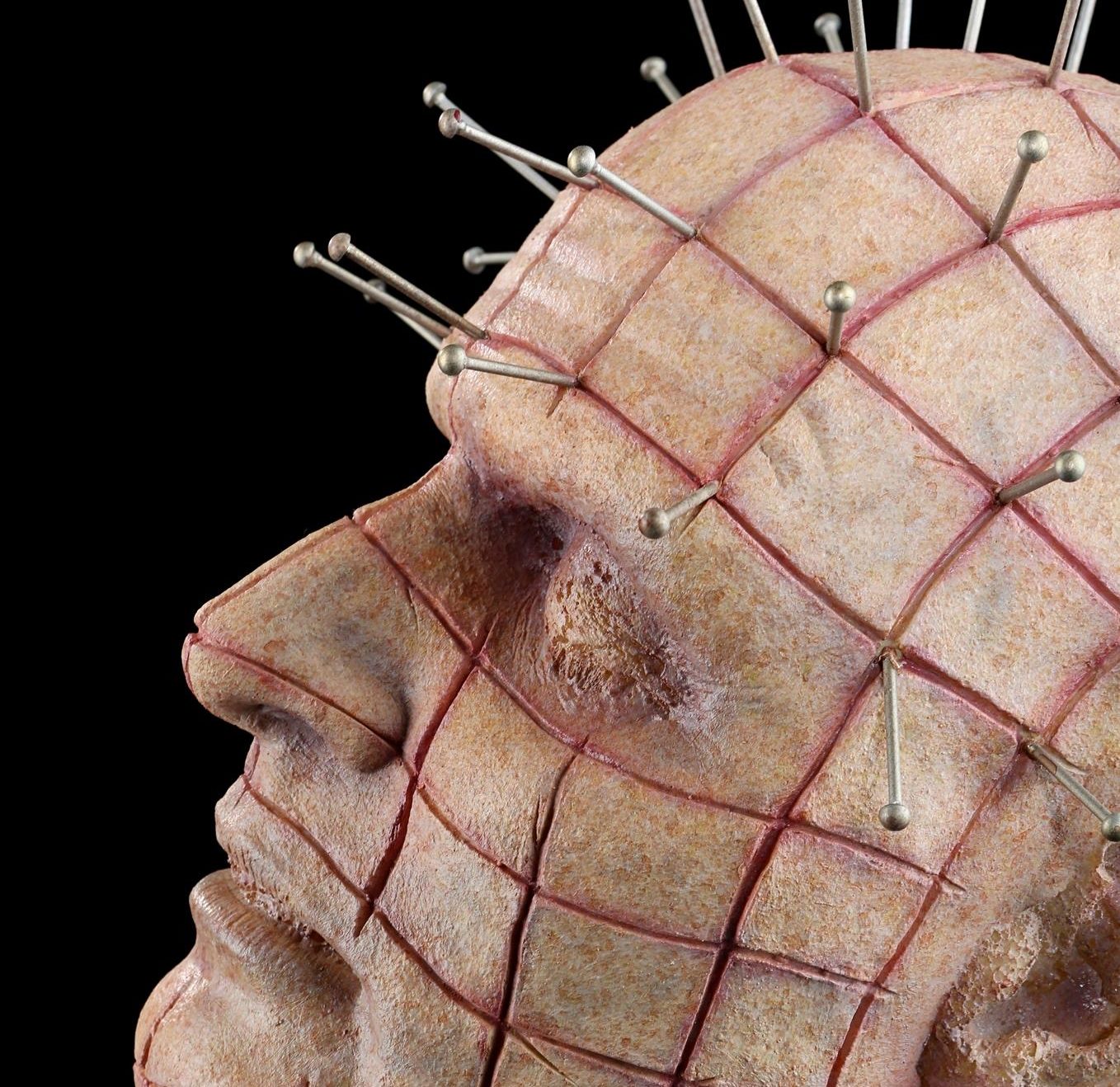
But Paul was a giant fan, he wanted the role. He even brought a Hellraiser box to his audition. He was just excited to be the character, you know. At times he got a bit big in the role, during the acting, but, in fact, we used Peter Cushing as a guide for him. I’d go over and just say [in his best Grand Moff Tarkin impression, which is actually very good] “You’re far too trusting.” And he’d immediately do a couple lines from that and it’d pull him back. I’d walk away and hear him going “You’re far too trusting, you’re far too trusting…” over and over. So he really enjoyed it.
And, you know, it’s been great fun seeing him relish the role and to see fans accept him in it, you know, and say in the reviews, “Look, Doug Bradley will always be Pinhead, but this guy is really good.” I think he’s relishing it. He’s a great ambassador for the character and the film.
PS: Let’s talk Pinhead some more. What was your approach to redesigning that iconic makeup for a new actor?
GT: I mean, there were a couple of things. Had it been Doug playing it, I would have kept absolutely, 100% the same as it always was. Because it was Paul, and I felt like if the film did really well or they made a figure of him, like, an action figure or something, I felt there had to be enough changes on it that it was his character. That it belonged to him. So there were little things on the makeup I changed. We did this thing, I call it the floating square. So actually, normally [the grid pattern] went all the way to the back, but I did a floating square on the back. And then also I took a square out of the corner of this chin. The pins [used to go down further too]. I always felt it was a bit heavy on pins and they used to catch on the costume sometimes, so I removed it. And then we made the cuts very, very deep and we gave him full black eyes, rather than just the iris.
And then, with his costume we did things like a robe. I always wanted to do a sort of priestly robe. And then, in the original designs that Jane Wildgoose did in the first film, they always talked about doing butcher skirts, you know, real chainmail. And I sourced out a real chainmail skirt. For those that have seen the auction or have seen the piece, it’s a full metal chain skirt.
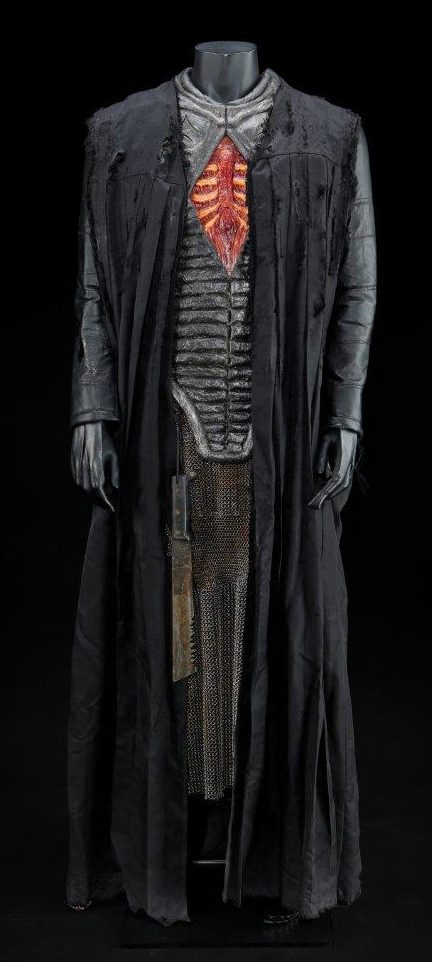
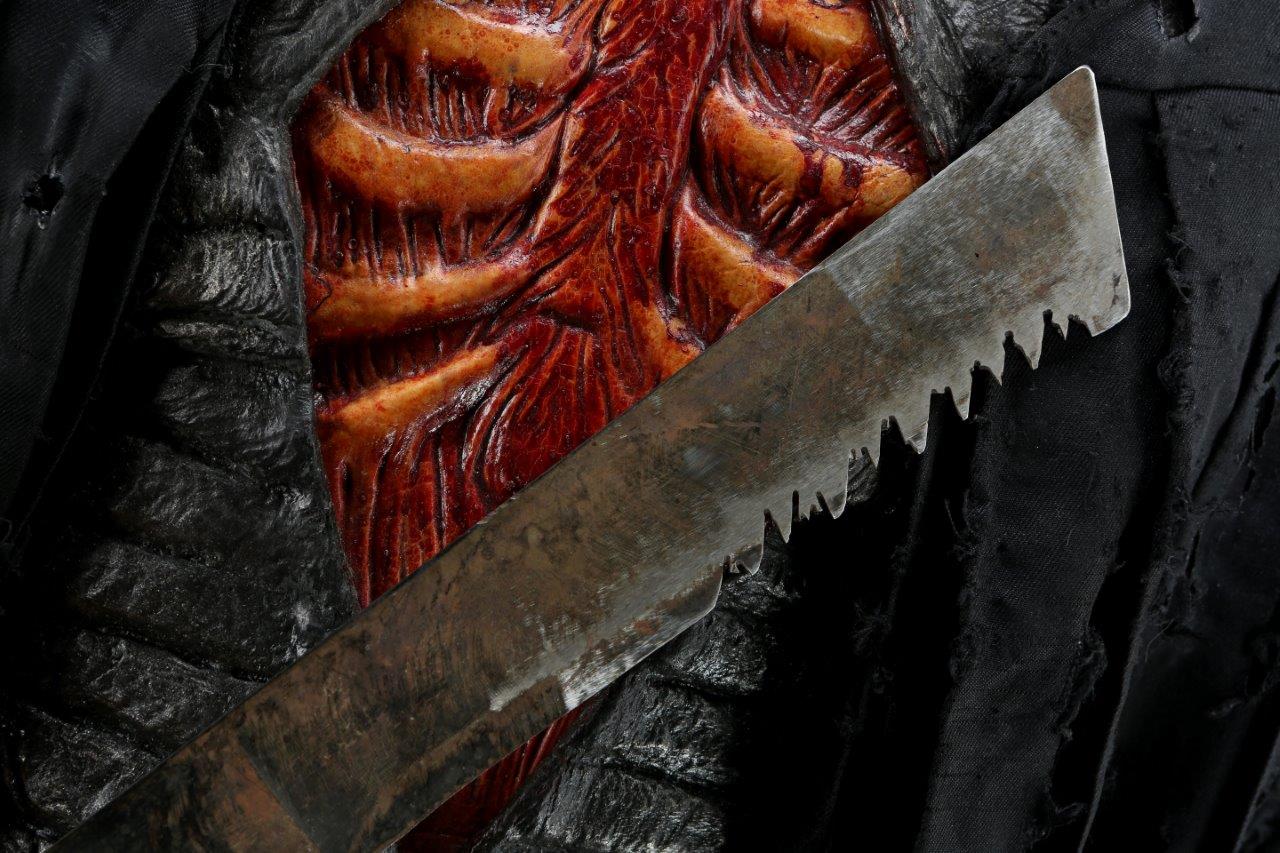
And he always previously had, like, a bunch of tools in the other films, like four tools. Skinning tools. But they were terrible on set, because they used to catch on the skirt and they’d get caught up in things and hooked up. So I thought let’s just cut it back to one really mean tool. So again, some of it is streamlining, but I really felt that Paul should have his own look. And then we gave him this diamond cut in the chest, which is like the Leviathan.
PS: Tell us about your starring role, the Auditor. Where did this character and design come from?
GT: Yeah, it’s kind of weird. What happened was, and I’m sure people know this, but years ago there was a concept for doing a redesign of Pinhead. And it was going to be directed by a French director who’s known for very, very graphic horror and we’d heard they wanted to make a very visceral film. I didn’t think I was going to be involved at all, so I thought before someone else redesigns Pinhead, I’ll do a quick redesign. So, I did something that was based on the idea of self-infliction and we shot a little video piece of it. Mike Reagan, who works at my workshop, we did a little makeup test on him put him in the robes and shot a little piece of video, and put it out there as a thing called Project Angle.
But, when I did it, I just liked the self-infliction of it and Wes Craven, the late, great Wes Craven, always said that a protagonist who’s willing to self-inflict injuries on himself is frightening to an audience. And he used that in the first Nightmare on Elm Street. There’s a scene where Freddie cuts his fingers off. So I was always, like, the cenobites look like they were carved up by somebody else. There’s no way Pinhead could have put that grid on his head, he was made, you know, and probably enjoyed it. Whereas, I thought the Auditor was probably self-inflicted. So, he’s got this blade and the cuts, if you look at them, they all come towards the face. There is rhyme to the madness, so they all kind of go toward the face, and when I sculpted it, everything was done so that everything self-inflicted.
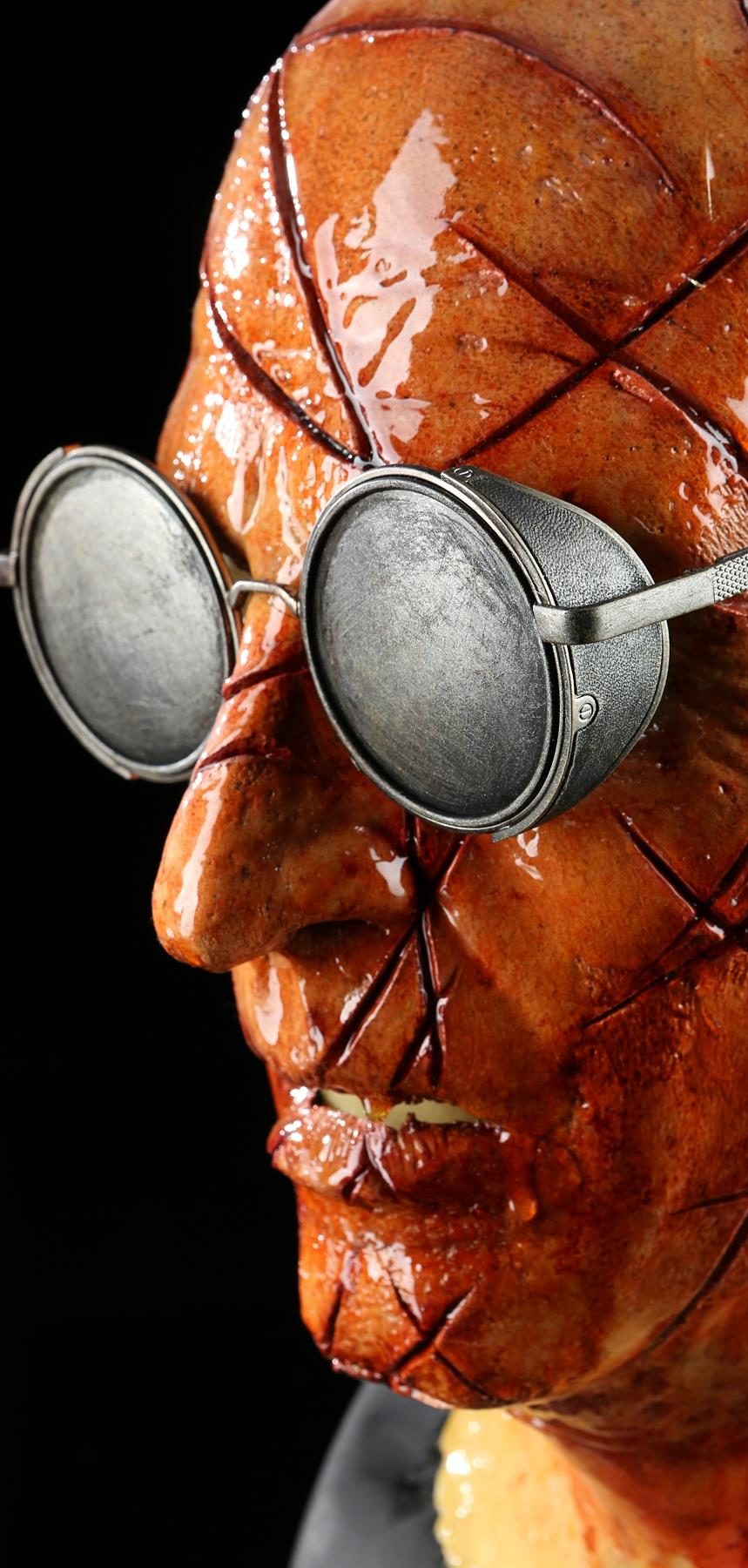
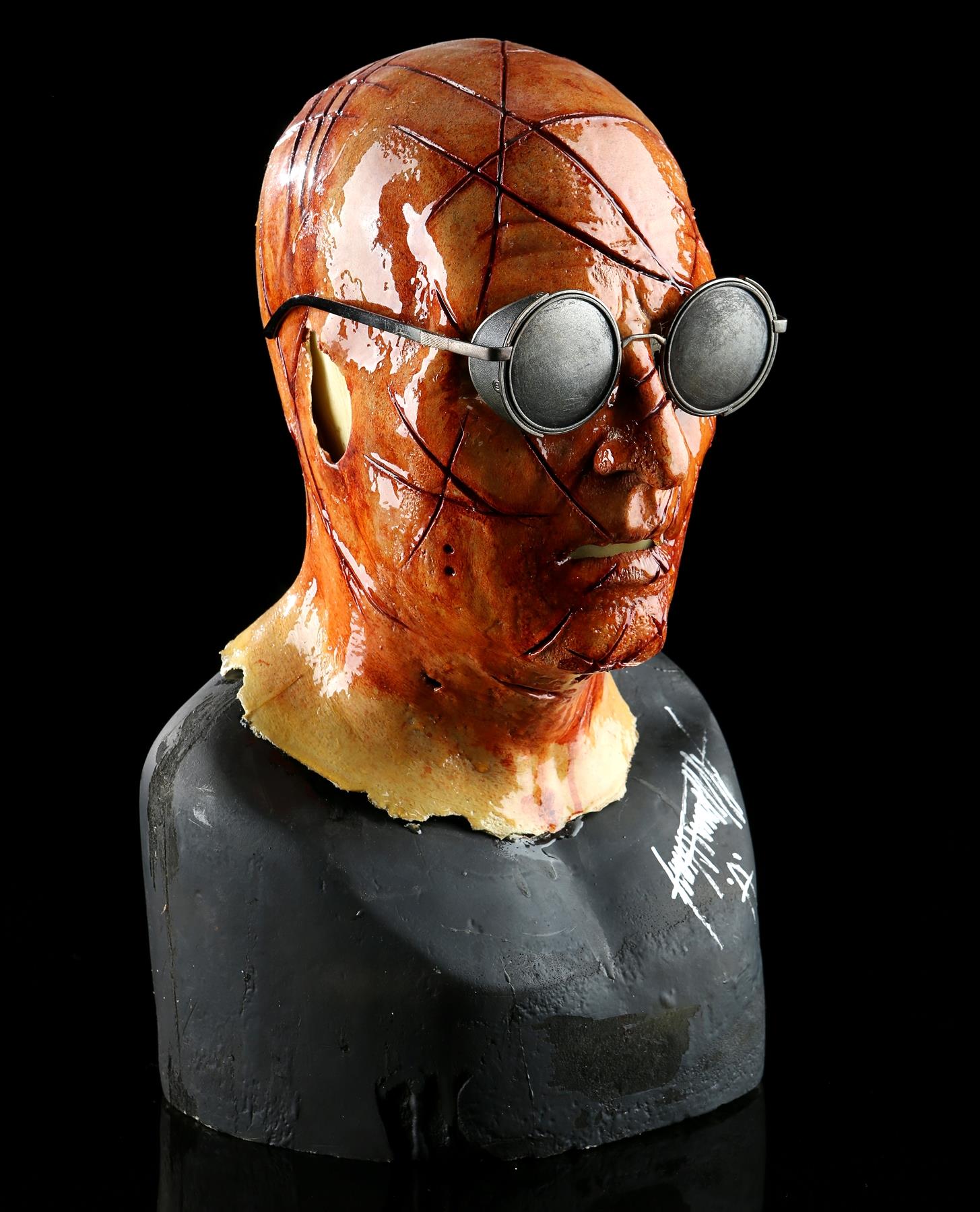
And then I, it’s not a case of butterball, but I think, with the glasses, if you can’t see these characters’ eyes, it has a lot of weight. Because, as an actor, if you just sit still in this makeup and look at somebody, you don’t know where the eyes are looking. You don’t know what his expression is. You don’t know if he’s enjoying what he’s looking at… it’s something like a shark. It’s like a shark’s black eyes. So I knew I wanted those sort of glasses, so that you don’t know what’s going on. And I knew that playing the character just came down to stillness. I’ve worked with so many actors and tell them, you know, try to do as little as possible, because everyone’s natural reaction is to over act…
PS: …To fight through it, basically?
Yeah, they feel like the makeup is restricting their expression. And it’s quite the opposite. What it does is amplify it. When you meet a character like the Auditor for the first time, his face is already screaming at you. So, a small tilt of the head, or small inclination or movement can transmit a lot of feeling.
There was also a second reason I wanted to play it, and it’s kind of technical, but we didn’t have a lot of money for makeup artists. So, by me playing the character, it meant that I could come in a couple hours early, you know, off the clock, and then I would get in makeup. Mike Measimer, one of our makeup artists, would apply it and I would help.
And then Paul Taylor would come in at call, you know, and then I could go and direct in makeup. Then, I could come help finish Paul up, which means the guys weren’t under the gun too much. And I could just remove my makeup, which the crew found very disturbing actually, because I would sit there pulling my face off after I was done. So, there are shots of me, you know, lurking around. I’ve got half the mask, raccoon eyes, and blood all over me. Kind of half in and half out.
And again, he’s one of those characters where, all the questions aren’t answered by the end of the film. So, that was the idea, the audience would be left wanting more. And some people have said “Oh yeah, there should be more Auditor, he’s really cool,” but I think there’s the exact right balance there. Because, I want to watch a film and by the end of it go “I want to know more about that guy!” That’s how I was with Hellraiser, with the first film. Because [Pinhead is] only in six minutes of the first film, so you’re left going “Who is he? What’s he doing? What’s the deal with that guy? I want to know more about him.”
PS: One of the most memorable pieces in the auction is the definitely Crystal’s Torso and Dog Parts. Where there any challenges shooting with that piece?
GT: What was really funny was she almost passed out doing that. She said “I physically feel sick. I’m having a real problem with this.” Which is funny, because it’s actually the last shot of the film, the very final image we shot. We did Crystal Lanning (Grace Montie) with a scar on her stomach, because obviously it’s a combination of a real actress with a real appliance on her stomach and a silicone torso with a stuffy dog and a real dog, which we had on set.
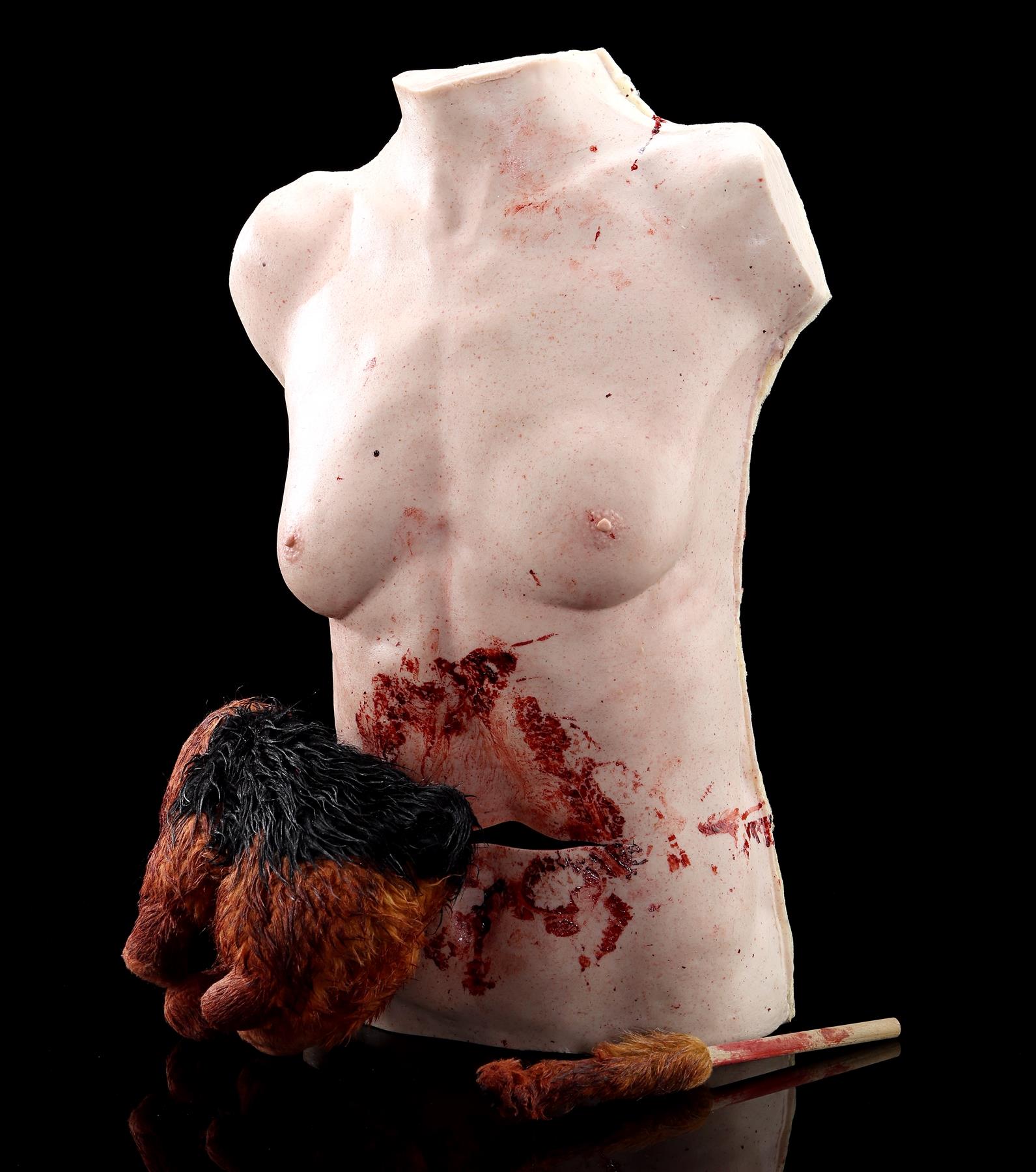
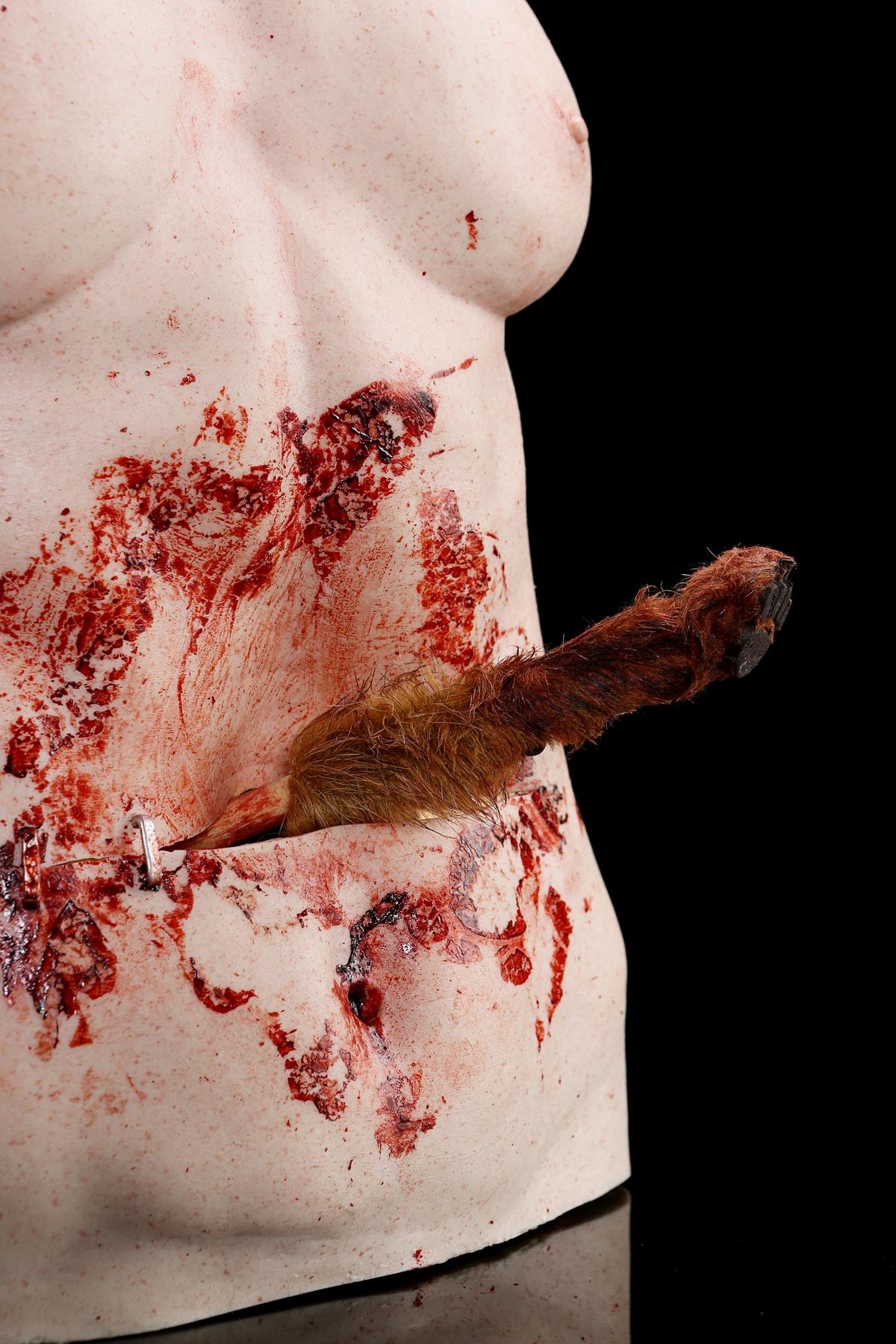
So what we did was we shot the real actress, and then shot Alexandra with the real dog and blood on her hands. And then, like two weeks later, we had to shoot the insert, which was just the silicone torso with the staples in it, and then pushed the stuffy, which we bought from Wal Mart, I think, to match the dog. It’s me pushing it up through with some good sound effects and everything else. But yeah, everyone who read that sequence in the film was freaked out.
PS: We’ve got some latex “skin” paper in the auction with typed out sins that are definitely not edible. What was it that John Gulager was eating as the Assessor on screen?
GT: Yeah, he was eating latex. Well, he didn’t consume it, but that’s actually better in some ways, because paper… it would break down in your mouth. I wanted this flippy-floppy, organic quality. I mean, it’s never explained in the film that it’s skin, because they cut out the part where they explain it. But if you watch the original audit, which you don’t have, but you’ll see this Watkins character gets his skin taken off and dropped in front of those three girls. Around their necks they have scissors (also in the auction). They take the scissors off and they cut the skin into square pages. It’s then washed, dried, and given to the Auditor and the Auditor sits down and now he has his pages ready for the next candidate who’s going to come in. So each person gives back to the next one.
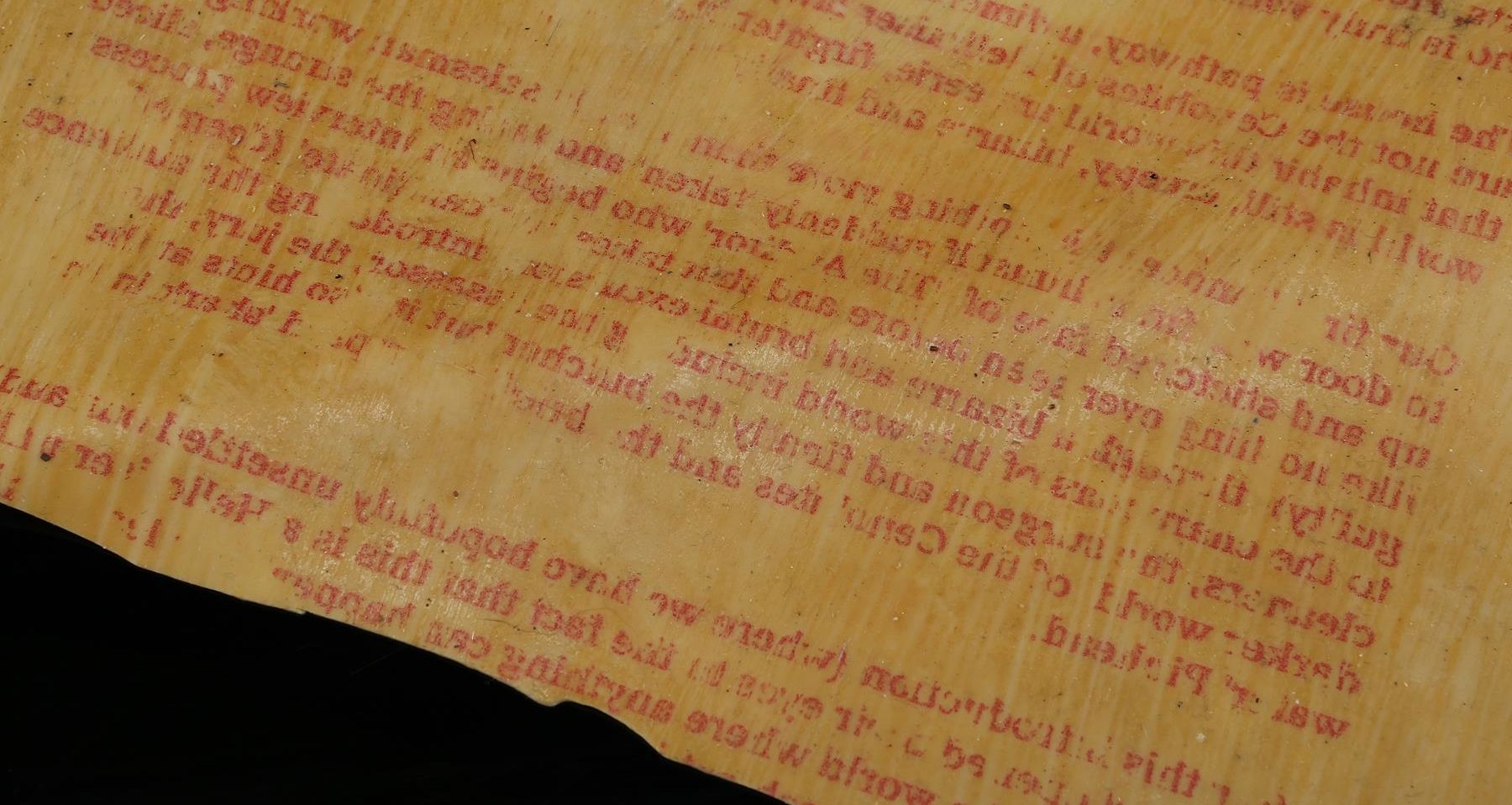
The biggest problem was trying to get them printed onto latex. That was a real problem. It was a nightmare. So we did paper pages for typing on and then there were these latex ones for John to consume.
PS: We also have several Stitch Twin Cenobites costumes and makeup busts in the auction. Where these creatures designed to resemble characters we’ve seen before, or are these original designs?
GT: No, I mean, I like sexy Cenobites. I’ve always liked the idea with these characters that there’s something sensual about them, but something disgusting. Same with the jury. You know, the idea that, you know, you can look at them and say, “Yeah, naked girls with skinned faces, it’s just gratuitous T&A.” It’s not. The idea that it’s… it’s throwing it in the faces of men really, that we’d go “Oh wow, look, naked chick.” And then going “Uhhh she’s got no face,” you know what I mean, like her face is carved off. How attracted am I still? So with those characters they’re in these tight, kind of skimpy costumes, but they’ve got stitched up faces. And it really harkens back to Clive Barker’s mantra “Beautiful, disgusting.” Same with Pinhead. He’s a very ornate, beautifully put together character, but there’s something malevolent about it. Even the order of him makes him more disturbing, in many ways. I’ve always regarded Pinhead as something of a mob boss, you know, a Godfather. So having these two floozies, you know, in his office, kind of, doing their show and tell for him, that’s really what it’s about.
PS: We’ve got a few of the classic puzzle boxes in the sale. Such an iconic piece, but did you ever want to do a redesign on that as well?
GT: We did! Again, [that was] one of the things that was fun about this, because I actually did think about the auction while I was making this film. And, this wasn’t a degradation towards the prop department, but I know if we’d taken this film, gone to Oklahoma, and had a prop person, things like the music boxes or the dishes for the spitting vials, a prop person would have literally gone down to Wal Mart, or a local big good store, and I didn’t want that to happen. So, when I was writing the script, and I knew we’d got the green light, I was on eBay every night sourcing things. Everything from the funnel he spits into, to the razor blade, which I made. I knew we were low budget, I thought if everything could have a, you know, the smallest detail. So, with all of the little prop items, I knew I was gonna try and do as much as I possibly could.

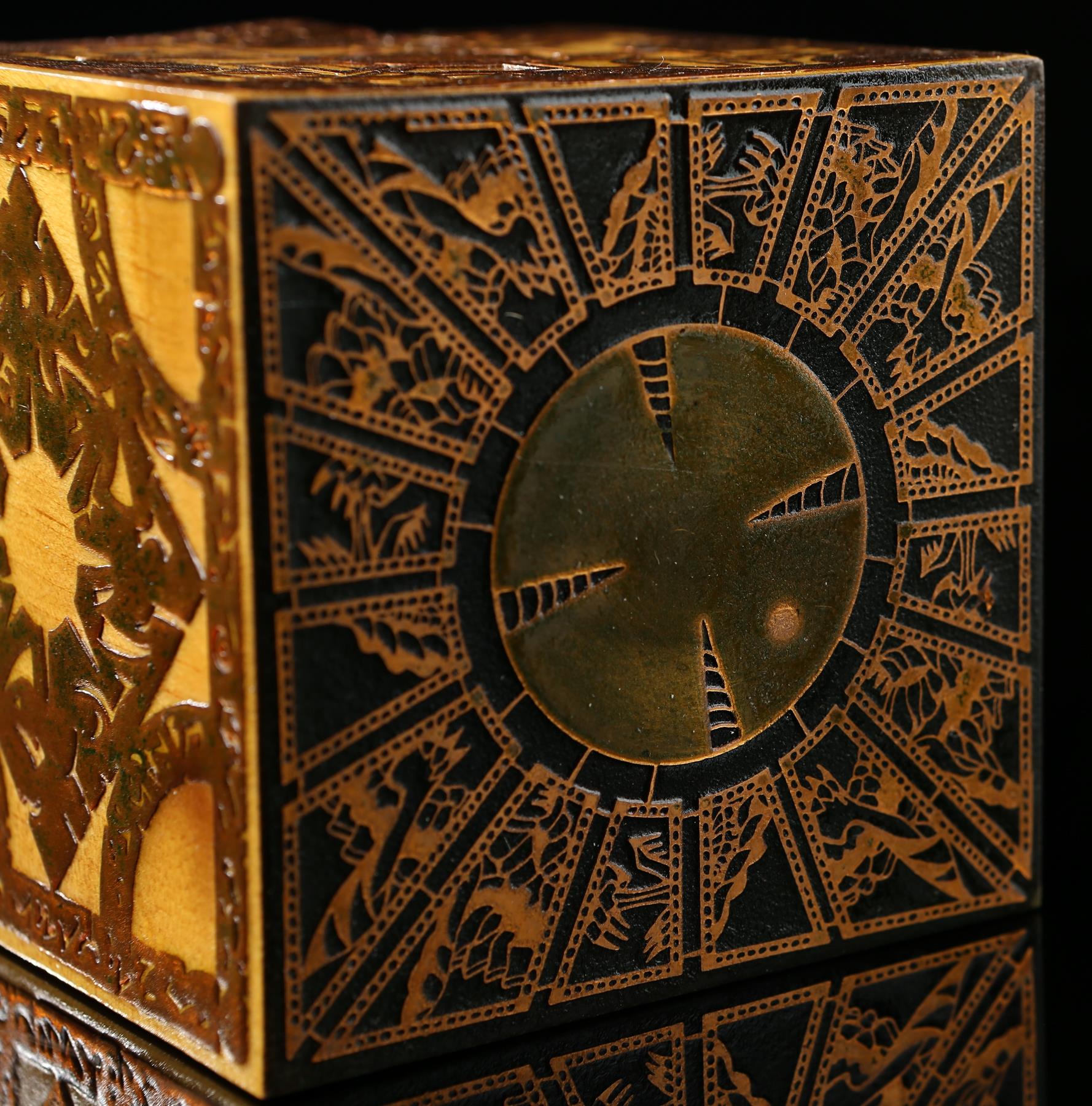
And with the boxes, there’s a lot of people out there who manufacture replica boxes and there’s a lot of boxes out there from previous auctions. So, again, I decided with this we’d do a little something different. Previous boxes were a mahogany box with brass etching, and if you look at [the boxes in the auction] they’re more of a bleached beach wood, pale wood, with a copper etching, so it’s got that copper, orangey glow to it. It was just to really make them stand out from the rest of the ones previously, so you can go “This is a Judgment box.” So, anyone who’s lucky enough to get one of them, you know, there’s no way it could be copied, because no one is doing a box like that. There were no others made for any other films. These are the only ones with a copper etching on them, and oddly enough, the copper etchings I had were due to a mistake.
On one of the films previously we’d brought it to our normal metallurgist, the guys who do the metal work who make these etchings, and they’d made eight sets of copper etchings. So they were kept in a drawer for years and then when [we shot Judgment] I thought to use the copper etchings, make them stand alone.
And then on the back wall, you’ve also got the other kind of weird configurations as well, because I wanted, kind of, a mantle of various boxes that may have been used. Because, the idea here again is there’s many of these boxes out there and they’re all out there doing their job of, you know, calling to people who want those experiences and pleasures.
PS: And lastly, every so often our staff or a bidder will notice an Easter Egg hidden in a piece’s design. Anything to look out for on any of the Hellraiser pieces?
GT: [Regarding Pinhead] there are a couple of weird things in the costume. If you actually look on his left shoulder area there’s an Eye of Agamotto sculpted into the costume. I’m a huge fan of Doctor Strange, and Scott Derekson, who directed Doctor Strange directed Hellraiser Inferno, so that’s my little tip of the hat there.


[Regarding the Auditor] the only thing that’s not is there’s a brand on the back of his head which ironically enough is actually my own initials, GT. But the idea would be that there’s a maker’s mark on the back of his head but the rest of them would be self-inflicted.
Remember these lots and many more are open for bidding now in Propstore’s HELLRAISER: JUDGMENT AUCTION Auction, with lots closing Friday, June 15th. Thank you for joining us for our blog coverage and be sure to check out our other articles in our auction series!
Follow us on Twitter and Facebook to be the first to know about all current & upcoming Propstore Auctions and more!
